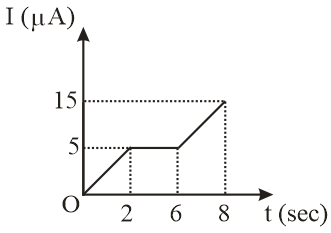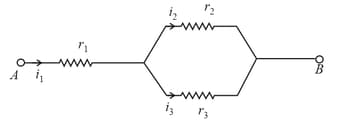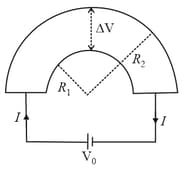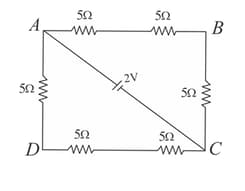curve is shown in figure then find the total charge from to


Important Questions on Current Electricity
A conducting wire of length , area of cross-section and electric resistivity is connected between the terminals of a battery. A potential difference is developed between its ends, causing an electric current. If the length of the wire of the same material is doubled and the area of cross-section is halved, the resultant current would be___
An electric cable having a resistance delivers of power at to a factory. If the efficiency of transmission is , then what is the value of ?
A heating coil of resistance takes to boil certain amount of water. If a similar heating coil is connected in series with the heating coil, then the time required to boil the water is , while time is required to boil the same amount of water if the coils are connected in parallel. What will be ?
Three resistors having resistances and are connected as shown in the given circuit. The ratio of currents in terms of resistances used in the circuit is :

Shown in the figure is a semicircular metallic strip that has thickness and resistivity . Its inner radius is and outer radius is . If a voltage is applied between its two ends, a current flows in it. In addition, it is observed that a transverse voltage develops between its inner and outer surfaces due to purely kinetic effects of moving electrons (ignore any role of the magnetic field due to the current). Then (figure is schematic and not drawn to scale)

The magnitude of electric field at every point of the conductor is: (resistivity of magnesium )
The unit of current element is
The current flowing through a wire depends on time as The charge flowing through the cross section of the wire in time from to is
The potential difference between points and of adjoining figure is


